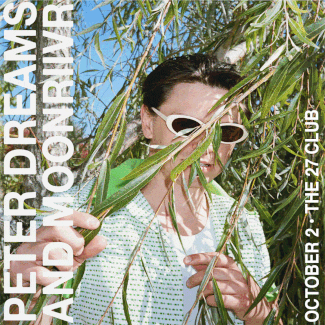Presented by Carte Blanche, Norway’s National Company of Contemporary Dance, 3 O’Clock in the Afternoon debuts at the NAC this weekend. For this piece, Carte Blanche commissioned well-known and respected Norwegian choreographer and long-time Carte Blanche collaborator, Ina Christel Johannessen.
In 3 O’Clock in the Afternoon, Johannessen questions the notion of boundaries – geographical, political and emotional – either created by or imposed upon us. The piece explores the impositions, necessity and navigation of those boundaries, and what it means to live within or outside of their delineations.
The stage, subtly set, relays this theme. Painted in natural colors on what appears to be a solid backdrop, the stage forms a rudimentary patchwork of shapes stitched together to look like a map. The stitches set out the boundaries and, simultaneously, the entire backdrop appears as an official declaration of countries and as marks/scars left on the skin.
Hidden on this seemingly impenetrable wall are five doors. Throughout the performance the 12 dancers in plain clothes—simple representations of us every day—timidly move in, out of and through this false barrier.
3 O’Clock in the Afternoon begins with an empty stage occupied by only one dancer and lit starkly from above by four fluorescents lights, like those found in a parking garage. His solo, although long, is an honest take on self-doubt, hesitation and reflection; an appropriate introduction for a performance that uses refined choreography and theatrics to make its point.
From here, the choreography builds in complexity to explore the impositions of what boundaries declare: that which is included versus that which is separate. The state of being connected, isolated, alone and together is the emotional basis of this piece.
Repeated throughout the piece, for example, is the placement of one dancer apart from the central group. At points throughout the performance, they stand completely still and watch, perplexed by the very precise, cohesive movements of the other dancers on stage. Or, more unsettling, a single dancer occupies the space in front of a very tightly choreographed group. This solitary dancer, alone in a crowd of people, is separated visually by the very nature of her movement—awkward and jarring—while the group moves in unison, fluid and graceful.
This contrast continues the length of the piece: separated, the dancers’ movements are stunted and strained; together, their movement is expressed as a cohesive unit which instinctively makes sense both visually and emotionally. Their movements clearly convey that, by nature, we long to be connected.
Although the impact of political and geographical boundaries is addressed (indirectly) in 3 O’Clock in the Afternoon, it is the handling of the emotional negotiation of boundaries that hits the mark.
The final performance of 3 O’Clock in the Afternoon is tonight at the NAC.














